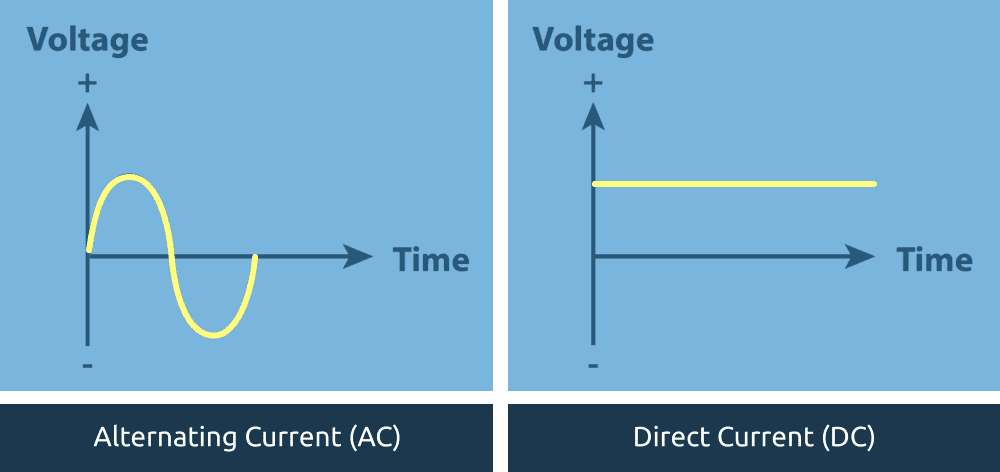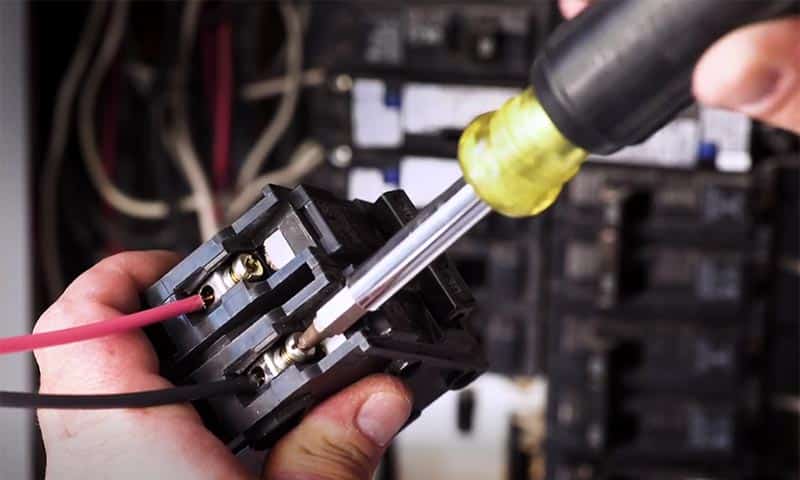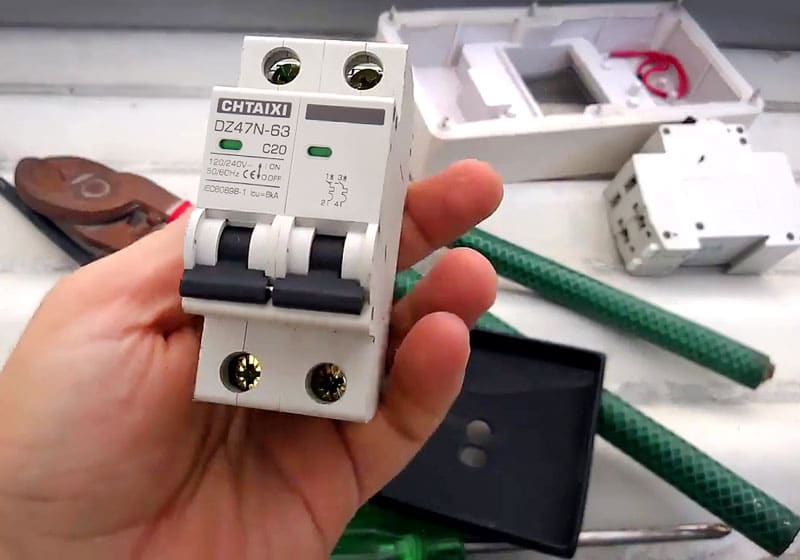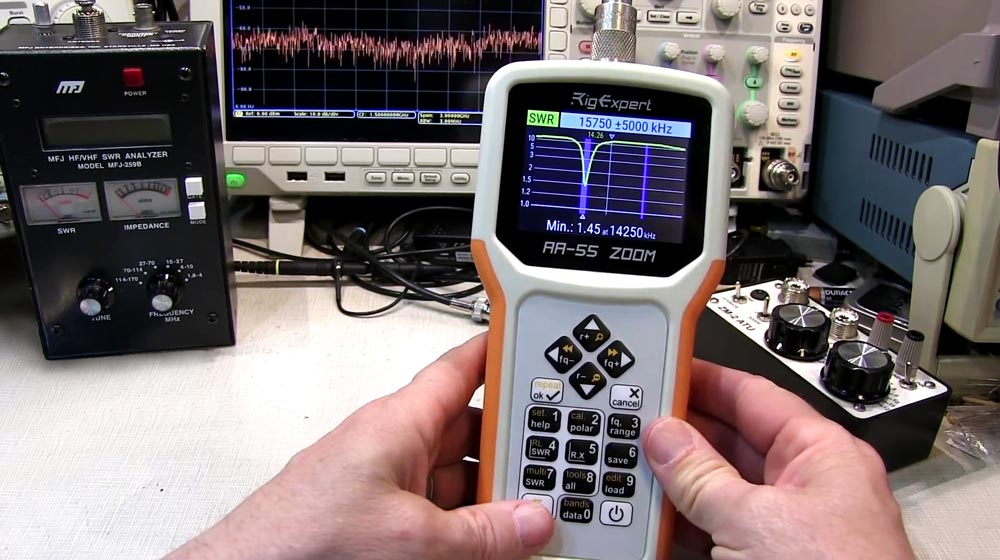A circuit breaker is an important part of any electrical system, providing protection against overloads and short circuits. In this guide, we’ll explain what circuit breakers are, how they work, and why they’re essential for keeping your electrical system safe. We’ll also provide some tips on troubleshooting common circuit breaker problems. Read on to learn everything you need to know about circuit breakers!
What is a circuit breaker and what does it do?
A circuit breaker is an electrical safety device designed to protect a building’s electrical system. It works by monitoring and regulating the amount of current that passes through it. When the current reaches a predefined limit, the circuit breaker automatically shuts off, ceasing the flow of electricity and eliminating the risk of shortages, overloads or any other kind of malfunction. In effect, a circuit breaker serves as an extra layer for safety for your home’s power supply, making sure that you don’t experience any dangerous electric shocks or short circuits due to high electrical loads.

What is circuit breaker in simple words?
A circuit breaker is an incredibly useful, yet simple device. It basically acts like a switch, allowing electricity to pass through the circuit until it reaches a certain capacity — when it does, the circuit breaker ‘breaks’ or shuts off the power to prevent damage to the wiring or potential shock hazards. This is especially great for preventing fires caused by electrical overloads. In other words, it’s an economical and safe way to protect any electrical system from overload-related problems. A little bit of forethought can go a long way in terms of safety and making sure your home or office remains free (and properly) powered at all times!
Types of Circuits
Circuits are arrangements of electrical components that allow electricity to flow through in a predetermined manner, usually performing some type of function or tasks. Circuits can be powered with either direct current (DC) or alternating current (AC). Common circuit designs range from simple applications such as single LED light displays to complex integrated circuit boards found in computers, phones, and other electronics.

In many cases, the circuit design needs to accommodate a wide variety of different voltage sources and still function correctly at any given voltage level. Any typo of application requiring a steady current draw can take advantage of the efficiency and power available through a properly designed circuit.
What Happens When a Circuit Trips?
When a circuit trips, it stops sending power to the electrical device that is connected to it. Electrical current will cease to flow through the connection and any lights or appliances using this particular circuit will become inoperable. It is a safety mechanism designed to prevent potential overloads or short circuits that could cause damage or a fire hazard. When a circuit trips, users should investigate the cause before resetting it. In some cases, the issue may be fixable by resetting the breaker or switching off affected devices but if issues cannot be detected easily then professional help may be needed.
The difference between single and double pole circuit breakers
Single pole circuit breakers are generally used to protect a single 120-volt branch circuit, while double pole circuit breakers can be used to protect two separate 120-volt circuits or one 240 volt circuit. Both types of breakers provide the same protection from overcurrent and short circuits, but double pole breakers offer more flexibility for larger circuits such as those found in homes with major appliances like water heaters and air conditioners. Because of their flexibility and increased amperage ratings, double pole circuit breakers are typically preferred over single poles for residential applications. IF you want to read more about types of circuit breakers you can check it here.

key facts and points
- A circuit breaker is an electrical device that acts like a switch, allowing electricity to pass through the circuit until it reaches a certain capacity.
- When the limit is reached, the circuit breaker ‘breaks’ or shuts off the power to prevent damage or potential shock hazards.
- Circuits can be powered with either direct current (DC) or alternative current (AC).
- When a circuit trips, it stops sending power to the connected electrical device and any lights or appliances using this particular circuit will become inoperable.
- Single pole breakers are generally used for single 120-volt branch circuits, while double pole ones can be used for two separate 120-volt circuits or one 240.
What is a double pole circuit breaker and what does it do?
A double pole circuit breaker is a device that protects two separate 120-volt circuits or one 240 volt circuit from overcurrent and short circuits. It is typically used on larger electrical systems such as those found in homes with major appliances like water heaters and air conditioners. Double pole breakers also offer more flexibility in terms of amperage ratings, so they are preferred over single pole breakers for residential applications. In addition to providing protection from dangerous overloads, double pole breakers can also provide increased safety by serving as an additional layer of protection for sensitive equipment. They are an essential component of any home’s electrical system and should be installed correctly by a qualified professional in order to ensure optimal performance and safety.
When to use a double pole circuit breaker?
Double pole circuit breakers are typically used in applications that require the protection of two separate 120-volt circuits or one 240 volt circuit. They can also be used to protect large loads such as air conditioners, water heaters, and electric ranges. Double pole breakers should always be installed by a qualified professional to ensure proper operation and safety. It is important to use the correct amperage rating for your application and never attempt to overload a breaker with more than the recommended amount of current.
How to install a double pole circuit breaker?
Double pole circuit breakers are typically installed in the main electrical panel by a qualified professional, who will use the appropriate tools and follow local building codes to ensure safe installation. When installing a double pole breaker, it is important to make sure that all wires are properly connected and that adequate space has been provided for all components.

It is also crucial to select a breaker with an amperage rating suitable for your application in order to prevent overloading or other dangerous situations. Attempting this type of job without proper training can be hazardous, so always consult a qualified electrician when dealing with any kind of electrical installation or repair.
What is a single pole circuit breaker and what does it do?
A single pole circuit breaker is a device that protects a single 120-volt branch circuit from overcurrents and short circuits. It is typically used in smaller residential electrical systems such as those found in apartments, condos, and small homes with basic appliances.
Single pole breakers are typically preferred for these applications because they offer simpler installation and require less space than double pole breakers. In addition to providing protection from dangerous overloads, single pole breakers can also be used to provide increased safety by serving as an additional layer of protection for sensitive equipment.
How to identify a single pole circuit breaker?
Single pole breakers are typically identifiable by the fact that they have one switch or lever. They also usually have a lower amperage rating than double pole breakers, so they are typically used in residential applications with smaller loads such as lighting and receptacles.
Additionally, single pole breakers often have a red or black label indicating their voltage rating. When dealing with any kind of electrical installation or repair it is important to select the correct breaker for your application in order to prevent overloading or other dangerous situations.
When to use a single pole circuit breaker?
Single pole circuit breakers are typically used in small residential applications that only require one 120-volt branch circuit for protection. This includes appliances such as televisions, computers, and washing machines. Single pole breakers are often preferred for these applications because they offer simpler installation and require less space than double pole breakers.
In addition to providing protection from dangerous overloads, single pole breakers can also be used to provide increased safety by serving as an additional layer of protection for sensitive equipment. Always consult a qualified electrician when dealing with any kind of electrical installation or repair.
What does AMP mean in pole circuit breaker description?

AMP stands for Ampere, which is a unit of measurement used to indicate the rate at which electricity flows through an electrical circuit. In terms of pole circuit breakers, AMP is often used to describe the amperage rating of a certain breaker.
It is important to select a breaker with an amperage rating suitable for your application in order to prevent overloading or other dangerous situations. Always consult a qualified electrician when dealing with any kind of electrical installation or repair.
For further information please refer to safety guidelines found on the National Electrical Code website.
Always take proper safety precautions and be sure you are working within local building codes when installing any type of wiring or electrical components. Failure to do so can result in injury or death. Safety should always be your top priority when dealing with electricity.
What kind of AMP pole circuit breaker exist?
AMP pole circuit breakers are available in a variety of sizes, ranging from 15-200 amps. The size and rating necessary for your application will depend on the amount of current flowing through the circuit. It is important to select the correct breaker for your application in order to prevent overloading or other dangerous situations. Always consult a qualified electrician when dealing with any kind of electrical installation or repair.
Additionally, all single pole breakers must be UL approved before use. UL listed breakers provide reliable protection against short circuits and power surges in your home’s electrical system. With so many different types of AMP pole circuit breakers available, it is important to choose the one that fits your specific needs best!
List of AMP pole breaker sizes:

15 AMP
20 AMP
25 AMP
30 AMP
40 AMP
50 AMP
60 AMP
70 AMP
80 AMP
100 AMP
150 AMP
200 AMP
FAQ – What is a circuit breaker: full scale guide
What is the difference between a breaker and a fuse?
A circuit breaker and a fuse are both electrical safety devices used to protect circuits from current overloads. The primary difference between the two is that a fuse is designed to break an electrical circuit if it senses excessive current, while a circuit breaker will trip or shut off the power when it senses an excessive load on the circuit. Circuit breakers can usually be reset after tripping, while fuses must be replaced when they blow. Both types of devices should always be installed by a qualified electrician in order to ensure proper operation and safety.
Is a breaker AC or DC?
Circuit breakers can be either AC or DC, depending on the type of power system they are installed in. AC circuit breakers are typically used in residential and commercial applications, while DC circuit breakers are usually used for industrial and automotive applications. It is important to use a breaker that is suitable for your application in order to prevent dangerous overloading conditions or other hazardous situations. Always consult a qualified electrician when dealing with any kind of electrical installation or repair.
Which circuit breaker is most used?
The most commonly used circuit breaker is the miniature circuit breaker (MCB). MCBs protect electrical circuits from overload or short-circuits, and can be tripped automatically or manually. They are available in a variety of sizes and ratings to suit specific applications and are usually installed at the distribution board for this purpose.
MCBs also have the advantage of being smaller than older types of circuit breakers, so they take up less space on boards as well. All in all, if you’re looking for a circuit breaker that is widely used, reliable and cost-effective, look no further than the miniature circuit breaker.
What size breaker do I need?
The size of breaker you need depends on the amount of current that will flow through the circuit. You should always consult a qualified electrician to determine the correct size breaker for your application in order to prevent dangerous overloads or other hazardous situations. In general, small appliances such as televisions and washing machines typically require a 15-20 amp single pole breaker, while larger appliances such as ovens and dryers may require a double pole 30-50 amp breaker.
When dealing with any kind of electrical installation or repair it is important to select the correct breaker for your application in order to prevent overloading or other dangerous situations. Always consult a qualified electrician when dealing with any kind of electrical installation or repair.
Do I need a fuse if I have a circuit breaker?
No, you do not need a fuse if you have a circuit breaker. Circuit breakers provide protection from excessive current in the same way that fuses do, but they can be reset after tripping and therefore should be used instead of a fuse in most applications.
Do circuit breakers last forever?
No, circuit breakers are not designed to last forever and should be replaced when they become damaged or worn. Over time, the contacts in a breaker can become worn and no longer make a secure connection which can cause it to trip prematurely or fail altogether. It is important to replace any damaged or worn circuit breakers with new ones in order to ensure that your electrical system is safe and functioning properly.
How many amps can a breaker handle?
The amount of current that a breaker can handle depends on the particular type and size of breaker. It is important to select the correct size breaker for your application in order to prevent dangerous overloading conditions or other hazardous situations. In general, small appliances such as televisions and washing machines typically require a 15-20 amp single pole breaker, while larger appliances such as ovens and dryers may require a double pole 30-50 amp breaker.
How to determine if you have a tripped breaker?
To determine if you have a tripped breaker, start by checking the circuit breakers in your electrical panel. Look for any switches that are not in their “on” position. If one switch is off, it indicates that the respective circuit has tripped. You can also check for any lights or appliances on the affected circuit which may be affected. If none of the outlets or lights on that particular circuit will turn on, then most likely your breaker has tripped and needs to be reset.
In some cases, there may be an obvious cause such as an overload due to multiple devices being plugged into a single outlet or too many lights being turned on at once but if no visible cause can be determined then professional help may be needed to identify and fix the issue.
How to reset a circuit breaker?
Once you have identified the circuit that has tripped, resetting the breaker is relatively simple. To do this safely, start by turning off all devices and appliances connected to the affected circuit. Then, locate the circuit breaker in question and switch it to its “off” position before flipping it back “on”. If the issue persists then a professional should be called in order to identify and solve the problem.
What to do if the breaker keeps tripping?
If a circuit breaker keeps tripping, it is strongly recommended that you contact an electrician or other qualified professional to investigate the issue. Continuing to keep resetting the breaker without identifying and addressing the root cause can potentially lead to more serious damage or even fire hazard. A licensed contractor will have the necessary tools and expertise in order to properly identify and resolve any electrical issues before they become more dangerous.
Circuit breaker safety tips – how to avoid electrical fires
In order to prevent electrical fires, it is important to practice safety when dealing with circuit breakers. Make sure that all devices connected to the affected circuit are off before attempting to reset a tripped breaker. It is also important to check for any visible signs of damage or wear and tear in your wiring as this can indicate the need for repair or replacement.
If you suspect any issues, contact an electrician right away as they will be able to identify and solve the problem quickly and safely. Additionally, avoid overloading outlets by plugging too many appliances into a single socket and make sure that you are not running too many lights on a single circuit. Taking these simple steps can help ensure safe operation of your electrical systems and prevent dangerous overloads.
Conclusion
Circuit breakers are an important safety device in any home or business and it is essential to understand how they work, especially when dealing with potentially hazardous electrical issues. If a circuit trips, resetting the breaker is one way of attempting to restore power but if the issue persists then professional help should be sought in order to identify and fix the underlying problem.
Furthermore, taking steps to avoid overloading outlets and circuits can help prevent fires caused by unsafe electrical practices. Knowing these basic tips can help keep your family and property safe from electrical hazards.




